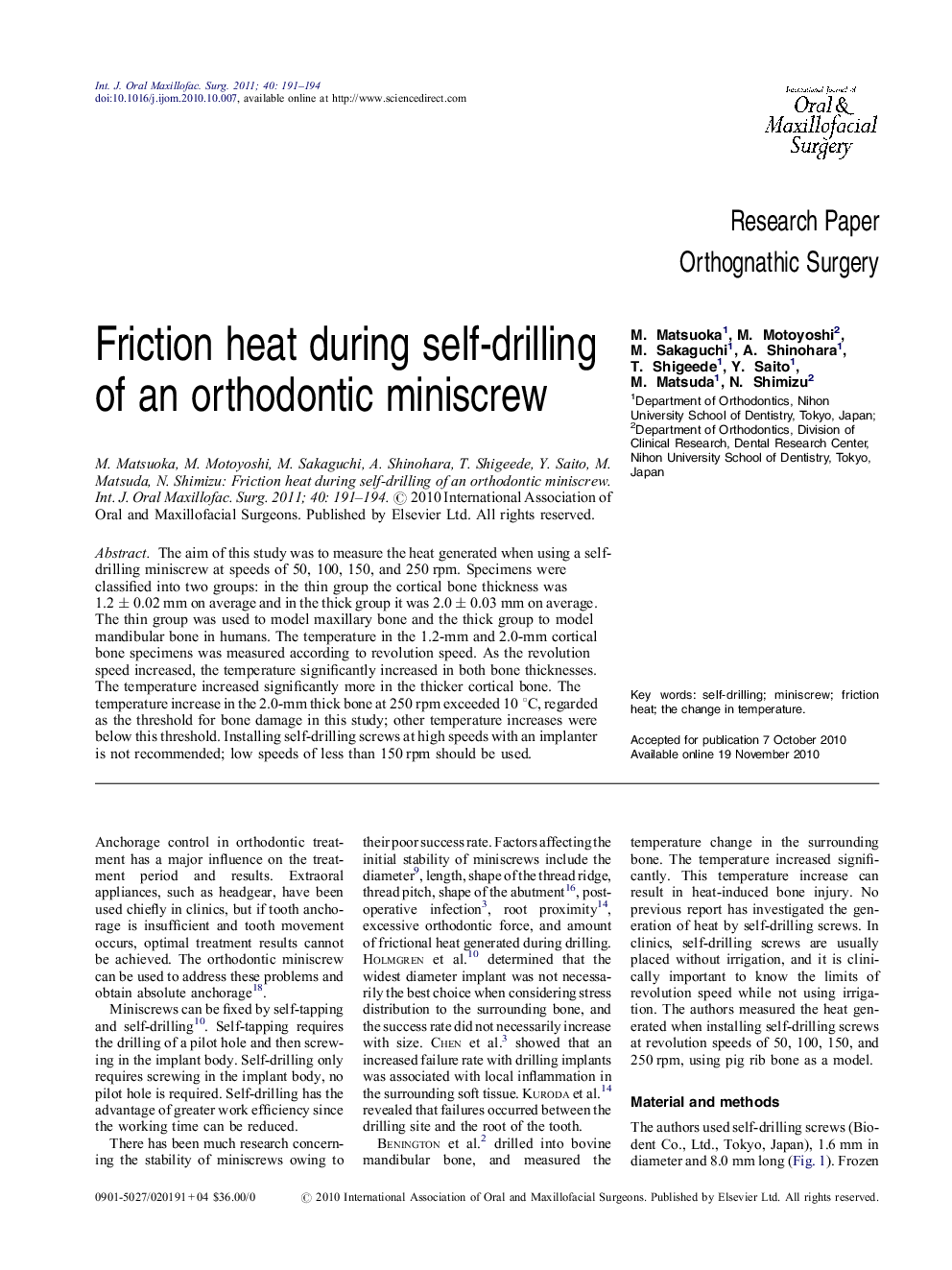| Article ID | Journal | Published Year | Pages | File Type |
|---|---|---|---|---|
| 3133308 | International Journal of Oral and Maxillofacial Surgery | 2011 | 4 Pages |
The aim of this study was to measure the heat generated when using a self-drilling miniscrew at speeds of 50, 100, 150, and 250 rpm. Specimens were classified into two groups: in the thin group the cortical bone thickness was 1.2 ± 0.02 mm on average and in the thick group it was 2.0 ± 0.03 mm on average. The thin group was used to model maxillary bone and the thick group to model mandibular bone in humans. The temperature in the 1.2-mm and 2.0-mm cortical bone specimens was measured according to revolution speed. As the revolution speed increased, the temperature significantly increased in both bone thicknesses. The temperature increased significantly more in the thicker cortical bone. The temperature increase in the 2.0-mm thick bone at 250 rpm exceeded 10 °C, regarded as the threshold for bone damage in this study; other temperature increases were below this threshold. Installing self-drilling screws at high speeds with an implanter is not recommended; low speeds of less than 150 rpm should be used.
